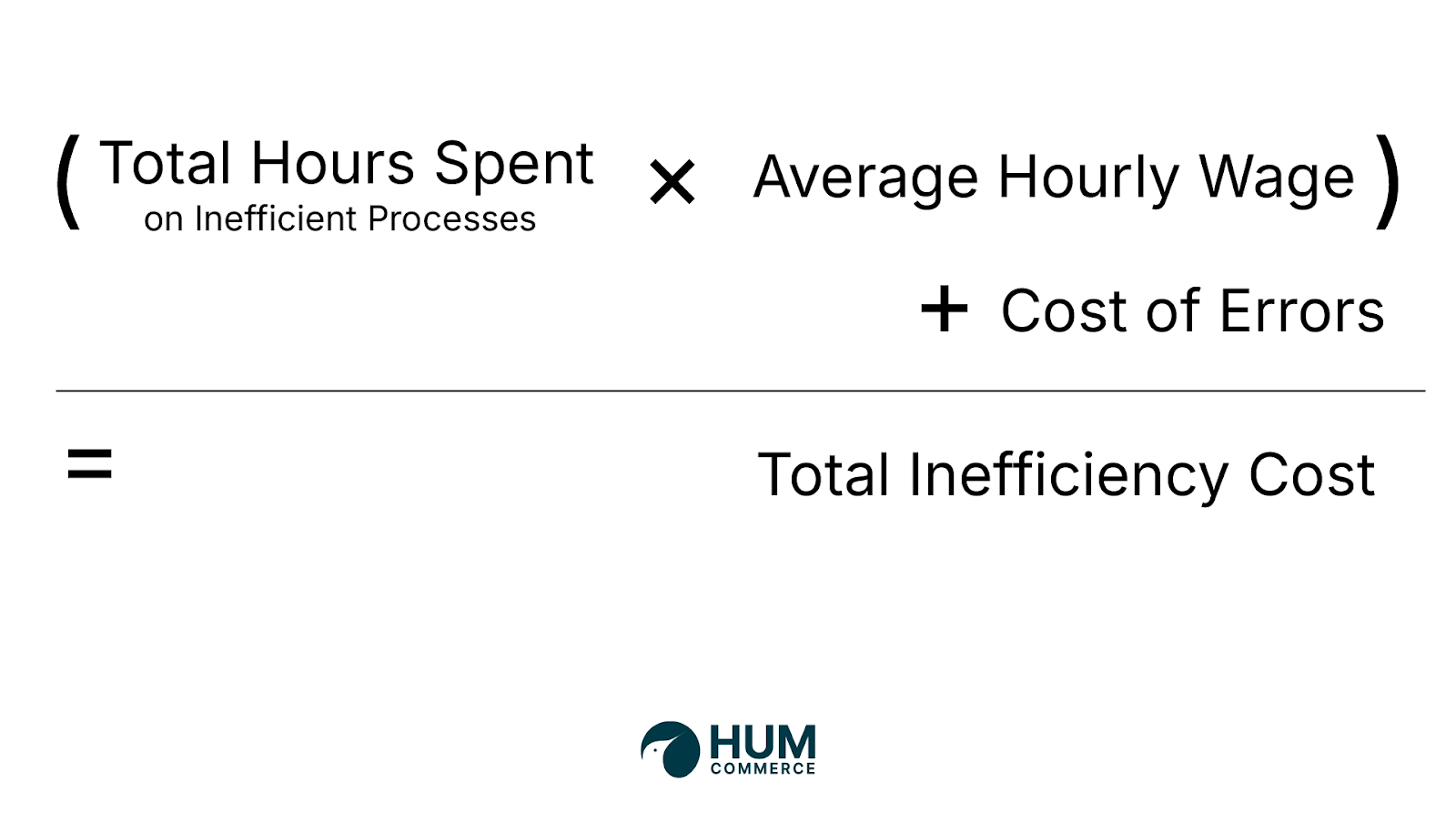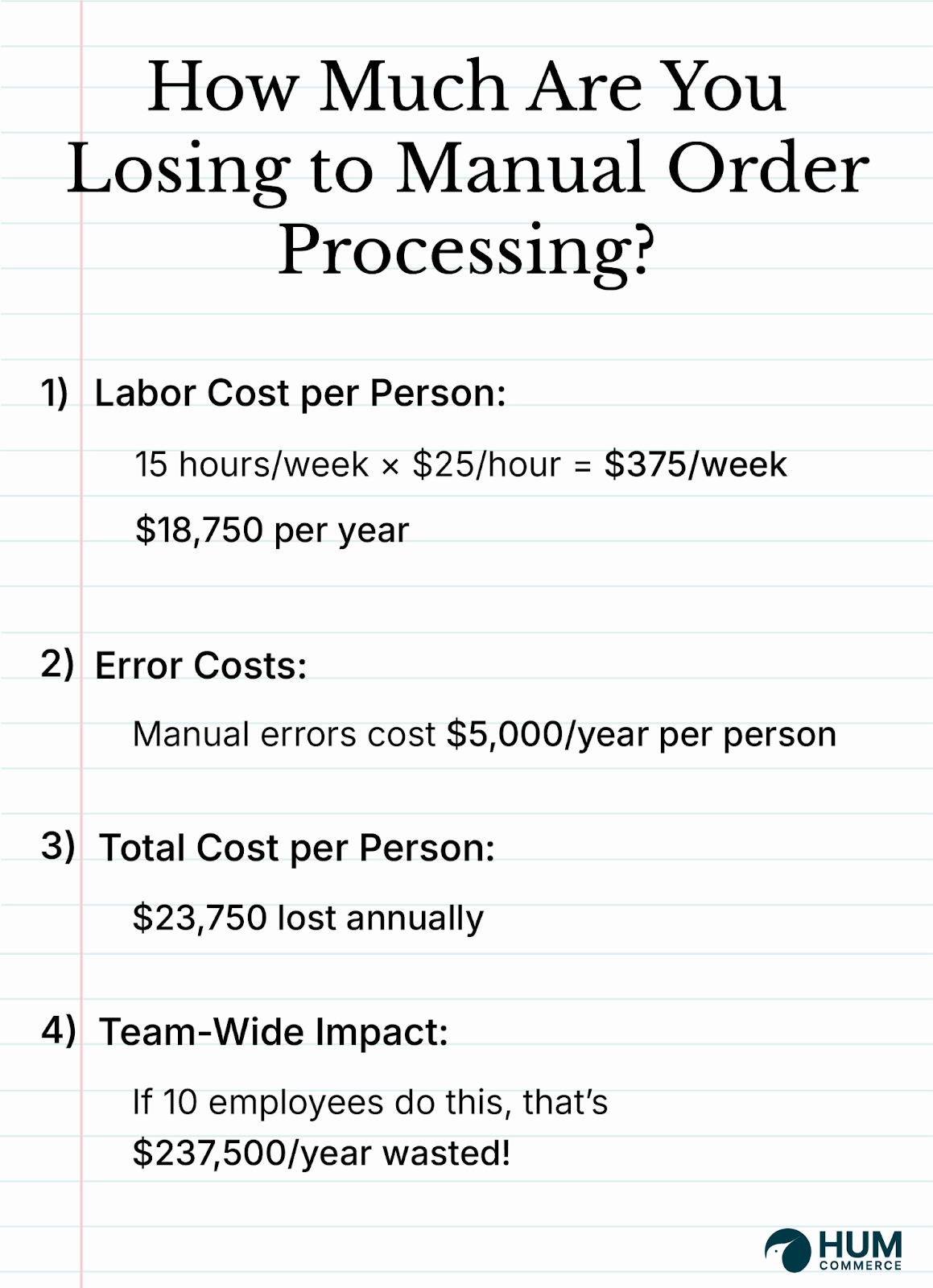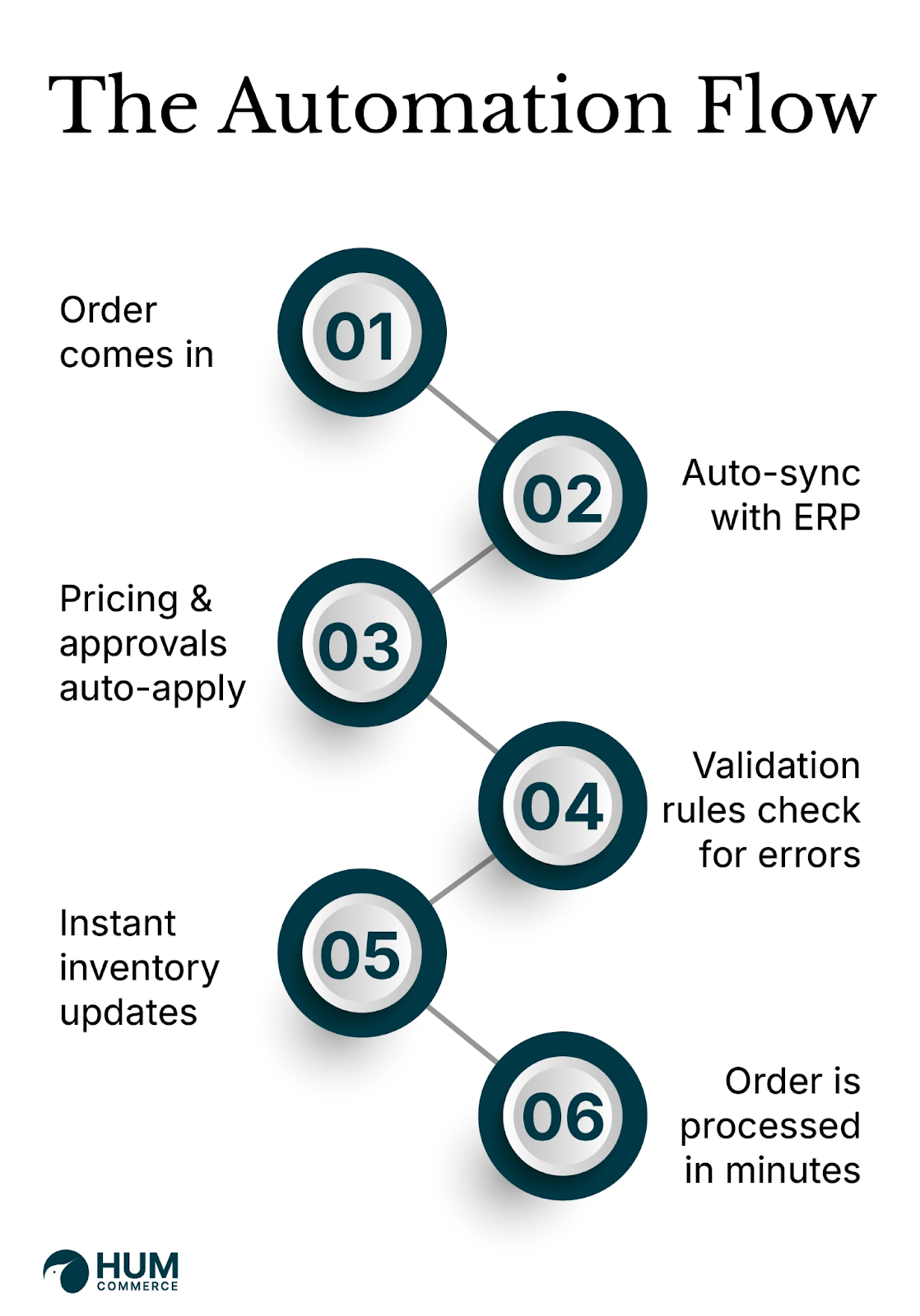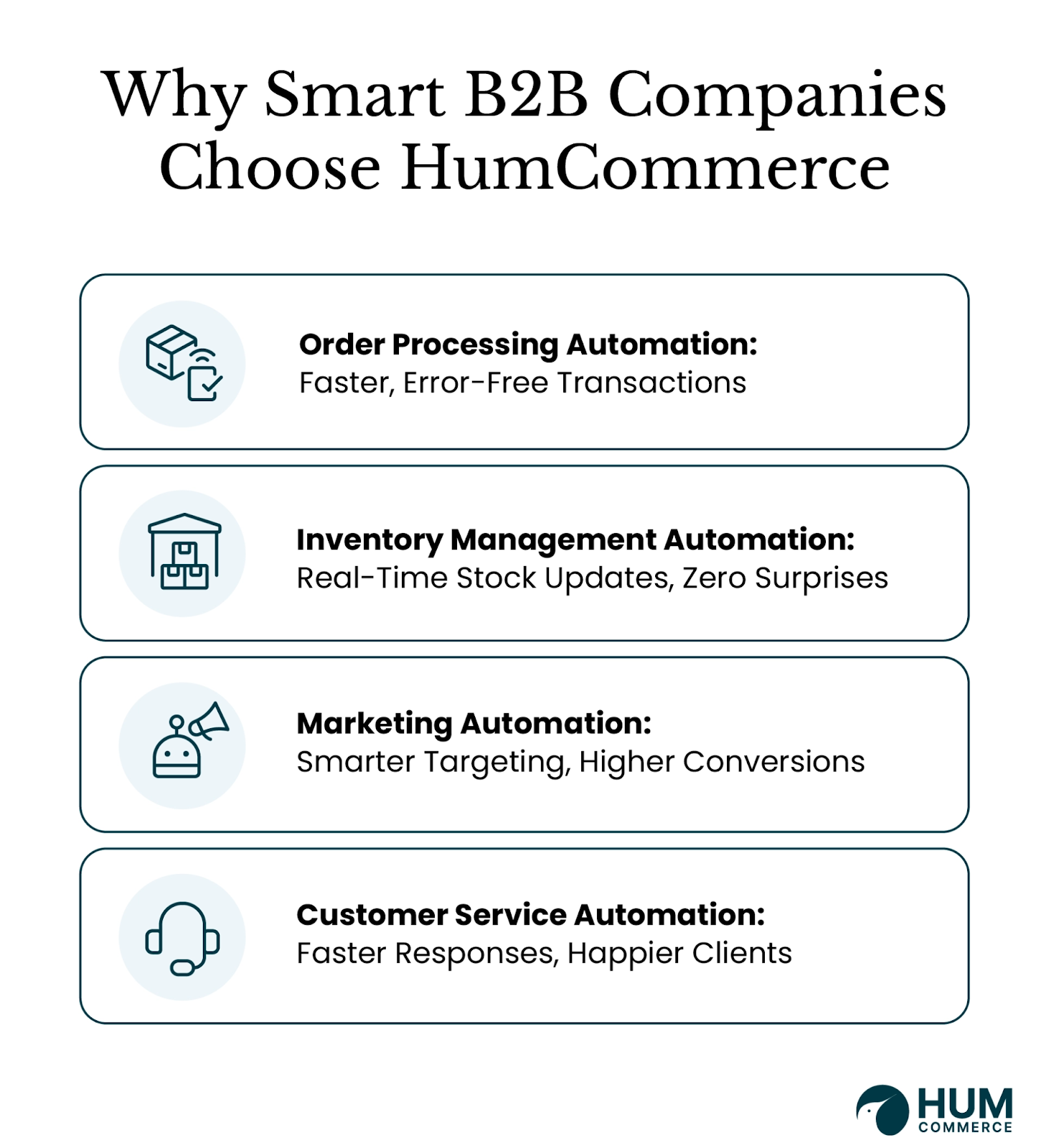Stop Wasting Time! Automate Your B2B Workflow with Magento
—
It’s Monday morning. And the chaos starts before your first coffee.
Your inbox is overflowing with order requests, but your sales team is still stuck processing last week’s invoices.
A key distributor is waiting for stock updates—but your inventory system is a mess.
Meanwhile, B2B marketing automation just launched a big promotion… except half the featured products are already out of stock.
Sound familiar?
By the time you untangle one problem, three more have popped up.
Manual processes are costing you time, money, and customers.
—
The Reality Check: How Much Time & Money Are You Losing?
In the fast-paced world of B2B commerce, inefficiencies are substantial drains on your company’s resources.
Research indicates that companies may lose between 20% to 30% of their annual revenue due to inefficiencies in their processes.
Understanding the Financial Impact
To grasp the magnitude of these losses, consider this: a company with an annual revenue of $10 million could be forfeiting up to $3 million each year due to operational inefficiencies.
These losses stem from various factors, including manual data entry errors, delayed order processing, and mismanaged inventory.
Calculating Your Company’s Inefficiency Costs
Assessing the cost of inefficiencies within your organization is crucial. Here’s a straightforward formula to help estimate these costs:

- Identify Inefficient Processes: Pinpoint areas where manual tasks or outdated systems are causing delays or errors
- Measure Time Spent: Calculate the total hours employees spend on these inefficient processes over a specific period
- Determine Labor Costs: Multiply the hours spent by the average hourly wage of the employees involved
- Calculate Total Inefficiency Cost: Add any additional costs resulting from errors, such as rework or lost sales, to the labor costs

—
Why Growth Brings More Chaos (If You’re Not Prepared)
Let’s say you’re a manufacturing distributor processing 500 orders a month.
Your team manually enters orders into your system, checks inventory across spreadsheets, and sends invoices one by one.
It’s manageable.
Now imagine you land a big contract, and suddenly, your order volume doubles overnight.
Sales reps are swamped with data entry instead of closing new deals.
Inventory teams scramble to track stock levels, leading to overselling or backorders.
Customer service is flooded with inquiries about delayed shipments.
Marketing launches a big promotion, unaware that some products are already out of stock.
This is what happens when a business tries to scale without B2B workflow automation. Growth should mean more revenue and happy customers—not operational chaos.
The Common Bottlenecks That Hold B2B Companies Back

Every growing B2B business faces workflow bottlenecks that slow them down. Here’s what they look like and why they become a problem at scale:
1. Manual Order Processing: Slow, Error-Prone, and Costly
B2B orders are complex. Unlike B2C, where a customer buys a single product at checkout, B2B transactions often involve:
- Bulk orders with custom pricing
- Multi-step approvals from procurement teams
- Recurring purchases and credit terms instead of instant payments
Manual order processing—emails, calls, spreadsheets—leads to errors: wrong SKUs, incorrect pricing, missed approvals. Fixing these takes extra hours, delays shipments, and frustrates customers. Costly mistakes that hurt trust and your bottom line.
At scale, this is unsustainable. You need order processing automation to sync orders, apply the right pricing, and process payments without human intervention.
2. Inventory Management: The Nightmare of Stockouts and Overstocking
Inventory is the backbone of any B2B operation. But keeping stock levels accurate across multiple warehouses, sales channels, and suppliers is a logistical headache.
Without real-time eCommerce inventory tracking, businesses face two major risks:
- Stockouts → Missed sales, unhappy customers, lost revenue
- Overstocking → Tied-up capital, storage costs, wasted resources
And it’s not just about numbers.
When inventory systems aren’t connected to order management, fulfillment gets messy. Your sales team might promise next-day delivery, only for your warehouse to realize the item is out of stock.
Automated inventory management automation ensures stock levels are always up to date, so you never oversell or understock.
3. Customer Interactions: Delayed Responses Kill Deals
B2B customers want a smooth buying experience. If they have to chase down updates on their order or wait days for a quote, they’ll move on to a competitor.
Some common pain points:
- Sales reps take too long to generate quotes due to complex pricing rules
- Customer service is flooded with “Where’s my order?” calls
- Reordering is a hassle—customers can’t quickly repeat past orders
- Stockouts lead to missed sales and frustrated customers
This is why leading B2B companies use automation to personalize and speed up customer interactions.
AI-powered chatbots, automated email updates, and self-service portals make sure buyers get what they need—without waiting on someone to manually respond.
—
The Automation Advantage: How Smart Businesses Stay Ahead
B2B are automating smarter—slashing manual work, eliminating costly errors, and keeping customers happy.
Here’s how automation makes a real difference:

1. Orders Processed in Minutes, Not Days
Manual Process:
- A customer emails an order
- Sales reps manually enter details
- They check stock, adjust pricing, and send it for approval
- If anything’s off, they go back and forth
With Magento ERP integration:
- Orders sync instantly with your ERP and inventory
- Pricing and approvals follow pre-set rules—no delays
- Customers get real-time updates, reducing “Where’s my order?” calls
Example: A building materials distributor cut order processing time from 2 days to 20 minutes, improving cash flow and customer satisfaction.
2. No More Costly Data Entry Errors
Manual Process:
- A tiny typo in an order code leads to a wrong shipment
- A misplaced decimal on an invoice results in payment disputes
- A copy-paste error means an incorrect delivery address
With PIM:
- Data syncs seamlessly across systems—no duplicate entries
- Inconsistencies are flagged before they become costly mistakes
- Forms auto-fill with 100% accurate information
Example: A heavy machinery manufacturer reduced returns by 35% and saved $400K annually by eliminating data entry errors.
3. No More “Out of Stock” Surprises
Without Automation:
- A big client places an order—but stock is already sold out
- Another item sits in your warehouse for months, tying up cash
- Replenishment is reactive, leading to stockouts or overstocking
With eCommerce Inventory Tracking:
- Inventory updates in real-time across all sales channels
- Demand patterns help you reorder before stock runs low
- Auto-replenishment prevents stockouts and over-ordering
Example: A food distribution company cut waste by 40% and boosted revenue by $1.5M in six months by switching to automated inventory management.
—
HumCommerce vs. The Rest: Why Smart B2B Companies Choose Us
Most B2B companies know that automation is essential, but not all automation tools are built the same.
At HumCommerce, we create a fully integrated system that eliminates inefficiencies, improves decision-making, and grows with your business.
Let’s break down exactly how we do it:
1. Order Processing Automation: Faster, Error-Free Transactions
Manual order processing slows down sales, creates errors, and leads to costly fulfillment issues.
From distributor onboarding to large catalog management, most B2B businesses struggle to keep operations smooth.
What We Do Differently:
Instead of just automating order entry, HumCommerce syncs your entire order pipeline with inventory, accounting, and fulfillment.
Our system ensures that every order is validated, stock levels are checked, and invoices are generated automatically—without the risk of human error.
How It Works:
- Orders sync directly with ERP and inventory systems
- Distributor and reseller onboarding is seamless, reducing sales friction
- Smart validation rules flag discrepancies before they cause issues
- Recurring payments and scheduled invoicing run without manual effort
2. Inventory Management Automation: Real-Time Stock Updates, Zero Surprises
Your sales team closes a deal, but fulfillment realizes the product is out of stock.
Sound familiar?
A lack of real-time inventory visibility leads to overselling, stockouts, and customer frustration.
What We Do Differently:
Unlike basic inventory tools that update stock levels once a day (or worse, once a week), we implement systems that provide real-time visibility across all sales channels, warehouses, and suppliers.
How It Works:
- Live stock updates prevent overselling and backorders
- Automated low-stock alerts and reorder triggers keep inventory optimized
- Smart forecasting minimizes waste and maximizes availability
- Large catalog and product quality management ensure smooth operations

3. Marketing Automation: Smarter Targeting, Higher Conversions
B2B marketing is reaching the right buyers at the right time with the right message.
The problem?
Most B2B businesses still rely on generic outreach, leading to low engagement and wasted ad spend.
What We Do Differently:
HumCommerce personalizes every interaction—across search, email, and ads—to help you reach the right buyers at the right time.
How It Works:
- SEO enhancements ensure your products rank higher on search engines
- Behavior-based email automation delivers personalized content to each lead
- Smart ad targeting improves performance on social media and paid search campaigns for better ROI
4. Customer Service Automation: Faster Responses, Happier Clients
In B2B, customer service is maintaining long-term relationships.
But when support tickets pile up and response times drag, customers start looking elsewhere.
What We Do Differently:
HumCommerce’s customer service automation anticipates customer needs, routes queries intelligently, and empowers customers with self-service tools.
How It Works:
- Chatbots provide instant responses and assist with order tracking
- Self-service portals let customers manage their accounts, check order history, and request support
- Automated ticket routing ensures urgent queries reach the right team member—fast
—
HumCommerce in Action: Real Businesses, Real Results
Case Study: Slashing Quote Generation Time by 75%
Problem
A North American manufacturing company selling configurable industrial parts was losing deals because of delays in their quote generation process. Their sales team faced multiple roadblocks:
- Pricing had to be manually calculated based on custom configurations, volume-based discounts, and client-specific terms
- Inventory and SKU availability were checked manually across spreadsheets
- Quotes often got stuck in approval loops, taking 3–5 days to finalize
Solution
HumCommerce integrated Magento with Epicor CPQ and built a real-time quoting workflow that addressed every pain point:
- Pricing rules were automated, eliminating manual errors and speeding up calculations
- Inventory was synced live with the ERP system, so sales reps quoted only available SKUs
- Approval workflows were pre-defined and embedded into the system, dramatically reducing back-and-forth
- Self-service quoting was enabled for repeat customers, cutting out manual steps altogether
Results
- Quote generation time dropped from 3–5 days to just a few hours
- Sales reps no longer needed to double-check pricing or stock—everything was handled in real time
- The company responded faster to inbound leads and increased its close rate for high-value, high-complexity deals
- Fewer errors meant fewer reworks, faster fulfillment, and happier customers
Source: HumCommerce Case Studies
—
The Smart Roadmap: How to Automate B2B Workflows in 30 Days
So, you’re ready to automate your B2B workflows—but where do you start?
Jumping in without a clear strategy can lead to half-baked solutions, wasted budgets, and frustrated teams.
The key is to take a structured, step-by-step approach that delivers quick wins while setting the stage for long-term success.
Here’s your 30-day roadmap to a fully automated, streamlined B2B operation.
Week 1: Identify Bottlenecks & Set Clear Goals
Before automating anything, you need to know where your biggest inefficiencies are.
Audit your current workflows: Where is your team spending the most time? What tasks are repetitive and error-prone?
Engage key stakeholders: Sales, operations, marketing, and customer service—get input from the teams that will use automation daily.
Define success metrics: Are you looking to cut order processing time by 50%? Reduce inventory errors? Improve customer response times? Clear goals help measure ROI.
Avoid This Pitfall:
Don’t assume automation is a one-size-fits-all solution. Every business has unique challenges—focus on the pain points that matter most.
Week 2: Choose the Right Automation Tools
Now that you know what needs fixing, it’s time to find the right tech stack.
Pick tools that integrate with your existing systems: Your ERP, CRM, and eCommerce platform should work seamlessly with your automation solution.
Ensure practical functionality: Look for automation that supports forecasting, marketing, and inventory sync—without adding complexity.
Prioritize scalability: Choose a platform that grows with you, so you’re not forced to switch in a year.
Avoid This Pitfall:
Don’t get caught in “shiny object syndrome”—focus on practical automation that drives real operational improvements, not just fancy dashboards.
Week 3: Implement & Test in Phases
Rolling out automation all at once can create chaos. Instead, implement in small, manageable phases.
Start with high-impact, low-risk processes: Order processing, inventory updates, and automated invoicing are great starting points.
Train your team: Even the best automation won’t work if your employees don’t know how to use it.
Monitor & refine: Track performance metrics and adjust workflows to improve efficiency.
Avoid This Pitfall:
Don’t overlook change management—get buy-in from employees early on, so they embrace automation rather than resist it.
Week 4: Optimize & Scale
By now, you should see real improvements. But automation isn’t a one-time setup—it needs tuning.
- Use performance data: Check if order errors are down, processes are faster, and customer satisfaction is improving.
- Expand automation gradually: Once your core systems are stable, branch into areas like marketing, customer support, and analytics.
- Keep refining: Improve based on real usage—what worked in week one might need adjusting by week eight.
Avoid This Pitfall:
Don’t stop at “good enough”—constantly refine workflows to drive even greater efficiency.
The Future Belongs to Automated B2B Leaders
B2B businesses that embrace automation don’t just work faster—they outperform competitors in customer satisfaction, scalability, and profitability.
The choice is simple: Keep struggling with manual inefficiencies or scale smarter with automation.
Find out how much you’re losing—book a free assessment today. Try HumCommerce today.
—
FAQs
—
1. How does B2B workflow automation improve efficiency in eCommerce?
B2B workflow automation removes manual tasks, cutting errors and delays in order management, invoicing, and fulfillment. With Magento ERP integration, businesses can sync inventory, pricing, and approvals in real time, ensuring smoother operations and faster order processing
2. What are the benefits of Magento ERP integration for B2B businesses?
Magento ERP integration connects eCommerce with backend operations like inventory and finance, helping businesses:
- Automate order processing, reducing errors
- Enable real-time eCommerce inventory tracking
- Improve reporting for demand forecasting
- Sync customer data for personalized marketing
3. How does order processing automation reduce errors and speed up fulfillment?
Order processing automation ensures smooth order validation, real-time stock syncing, and auto-generated invoices. A Magento order management system also:
- Prevents stock discrepancies and backorders
- Automates pricing and approval rules
- Integrates with B2B payment gateways for seamless transactions
4. Why is inventory management automation essential for B2B companies?
Inventory management automation prevents stock issues using AI-driven real-time updates. It helps businesses:
- Maintain eCommerce inventory tracking across channels
- Automate stock replenishment and avoid overstocking
- Forecast demand for smarter purchasing
5. How do AI-powered SEO enhancements drive traffic and sales for B2B eCommerce?
AI-powered SEO enhancements boost search rankings and attract high-intent buyers by:
- Automating keyword optimization
- Enhancing product visibility with structured data
- Personalizing search results based on behavior








